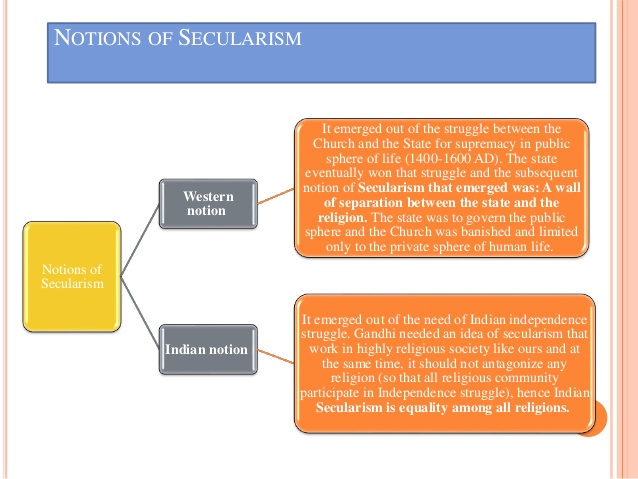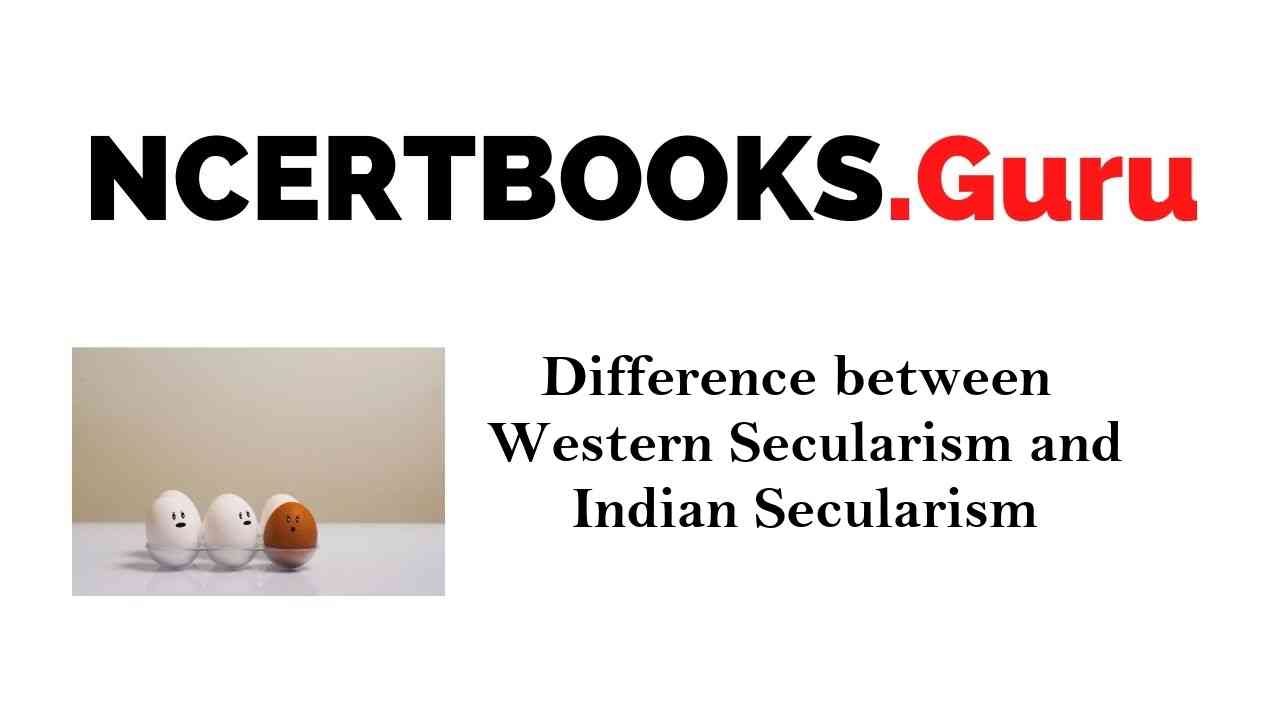Secularism is the alienation of the state from religious societies. There are three main principles of secularism that underpin and protect the freedoms we enjoy.
You can also find differences between articles on various topics that you need to know. Just tap on the quick link available and get to know the basic differences between them.
- Separation of religious organizations from state institutions and forming a public circle where people may participate in religion and not monopolize.
- The freedom to believe or practise a religious faith without affecting others and not having it or changing it as per an individual choice.
- Equal rights to religious beliefs to prevent any religion at advantage or disadvantage.

Major Differences Between Western And Indian Secularism
Secularism, according to our constitution, is the concept of democracy and equality. Although there are a few similarities between Indian and Western secularism, there are various fundamental differences between them.
- In western constitutions, secularism is the absence of religion. However, Indian secularism does not define it as irreligiousness, but it means the plethora of religion.
- In western society, complete separation between state and religion and the freedom of religion for all individuals is considered. Although the history of western civilization has led to brand development between church and state, India has a history that has taken a different turn. In India, secularism means treating every religion equally without discriminating against any followers. Although there is no prohibition of state indulging in religious affairs, however, positive interference is entertained. The state and religion are partially separated with no mention of an official state religion.
- Secularism in Western society does not allow the open display of their religion other than religious institutes. France has banned the hijab because the show of religion is not appreciated in the country. In India, followers can freely practice religion and are supported by the state.
- In western society, laws are made but not related or include any religion. On the contrary, In India, the law wants to incorporate the various religious principles that the variant religion followers are to act upon.
- According to the western society model, the state does not provide monetary aid to educational institutes that are run by religious societies. However, in India, the state contributes to all kind of religious factions and helps them form and maintain their institutes for education with financial aid from the state. The Indian Constitution permits partial support to religious schools and buildings.
- In western society, the state jeels itself separated from religion’s affairs until it maintains its limits of the law. The model also restricts any policy for the public, which is related to any religion. In comparison, Indian secularism allows the state’s interference in religious matters to avoid any evil practices. The government bans widow burning, dowry, animal sacrifices, Dalit prevention from entering temples, and child marriage.
- Western society follows a single code of conduct irrespective of religion. In comparison, India has various law codes as per individuals’ religion. Indian Muslims have their sharia-based persona law while the Sikh, Christian, and Hindu share the common law.
- Western society neglects religious minorities and focuses on the equality and liberty of a particular religion. While in India, religious freedom is provided to all. They help each other to maintain a community and culture in various educational institutes.
These are some of the major differences between western secularism and Indian secularism.
